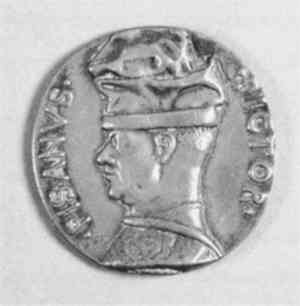TECHNICAL EXAMINATION OF RENAISSANCE MEDALS THE USE OF LAUE BACK REFLECTION X-RAY DIFFRACTION TO IDENTIFY ELECTROFORMED REPRODUCTIONSGlenn Wharton
1 INTRODUCTIONTHE ART OF MEDALS is an art of multiples. From their origin in 1438 by Pisanello, Renaissance medals were usually produced in series, either cast in molds or struck from dies.1 Additional copies, called “surmoulages,” were made subsequently by casting in molds taken from the medals themselves. “Electroforming,” another technique of reproduction, was developed in the mid-nineteenth century following the discovery of the principles of electrochemistry.2 Since these various methods of fabrication are associated with individual artists, schools, and periods of history, identifying them provides evidence for authentication as well as establishment of historical chronology. Cast, struck, and electroformed medals can usually be distinguished by careful optical examination with the aid of low power magnification.3 There are times however when surface details may be misleading. For instance a cast reproduction of a struck medal may exhibit features of both techniques. Electroforming produces copies with such fidelity that often the most skilled eye cannot distinguish them from the original (Fig. 1). Clearly there is need for non-destructive techniques of analysis to supplement visual examination in distinguishing these methods of production.
The aim of this research was to examine the possible application of Laue back reflection X-ray diffraction to help meet this need. The apparatus employed was a flat-plate camera which produces photographic images of X-rays diffracted by the surface of the medal. Among other things, these photographs indicate the size of the grains within the metal microstructure. Since the grains of cast and struck metal are significantly larger than those of electroformed metal, this technique of X-ray diffraction seemed a likely tool to help identify electrotypes.4 Before discussing Laue back reflection X-ray diffraction in detail, a brief review of results obtained from visual examination and other methods of analysis will be presented. |
